Danelectro Longhorn Bass (2/2)


This ( the original, not the reissue ) is the model that John Entwistle originally tried to record "My Generation" with, but kept breaking strings and ultimately gave up and used a Fender. While the reissue uses regular bass strings, the original used bass strings with guitar-sized ball ends. Regular bass strings do not fit the notches on the original bridge, they pop out, and the Danelectro strings were not available in Britain at the time, so after going through several instruments, he had to give up and use a Jazz. 'Ox' was known for building his own basses, he pretty much invented the FenderBird. Why he didn't just file out the grooves on the soft brass bridge plate and mount regular strings is a mystery to me.
The Longhorn is actually an ingenious design. It allows the most compact instrument possible, while accommodating up to a bass scale length and maintaining balance and playability. But more than that, it allows the same body to be used for a guitar by simply swapping-out the neck and bridge. This is what I did for my Longhorn guitar, although Danelectro never made such a model.
Instead, they went one step further and re-fretted the bass-length neck for a 25" guitar scale, which pulls the bridge into the center of the body. You can see it in the ad above. This was dubbed the "Guitarlin", since it had a range that went from a normal guitar up to a mandolin, with almost three octaves-worth of frets. I don't find those high crowded frets to be very playable, but it's still a neat idea. They also could have built six-string bass and baritone models by simply substituting existing parts, but I guess they figured three instruments from one body was enough.




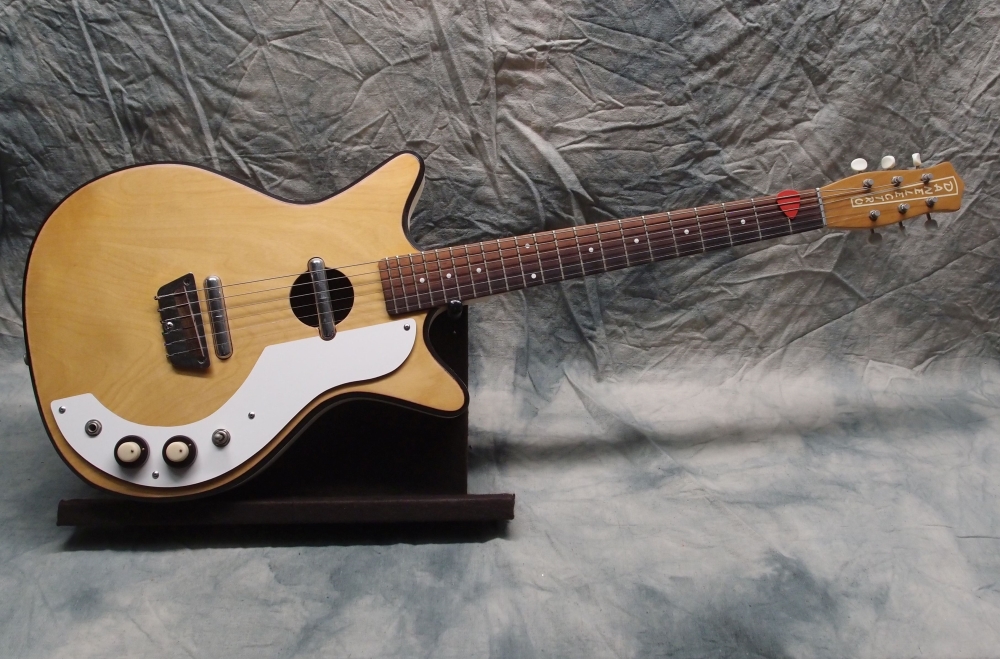





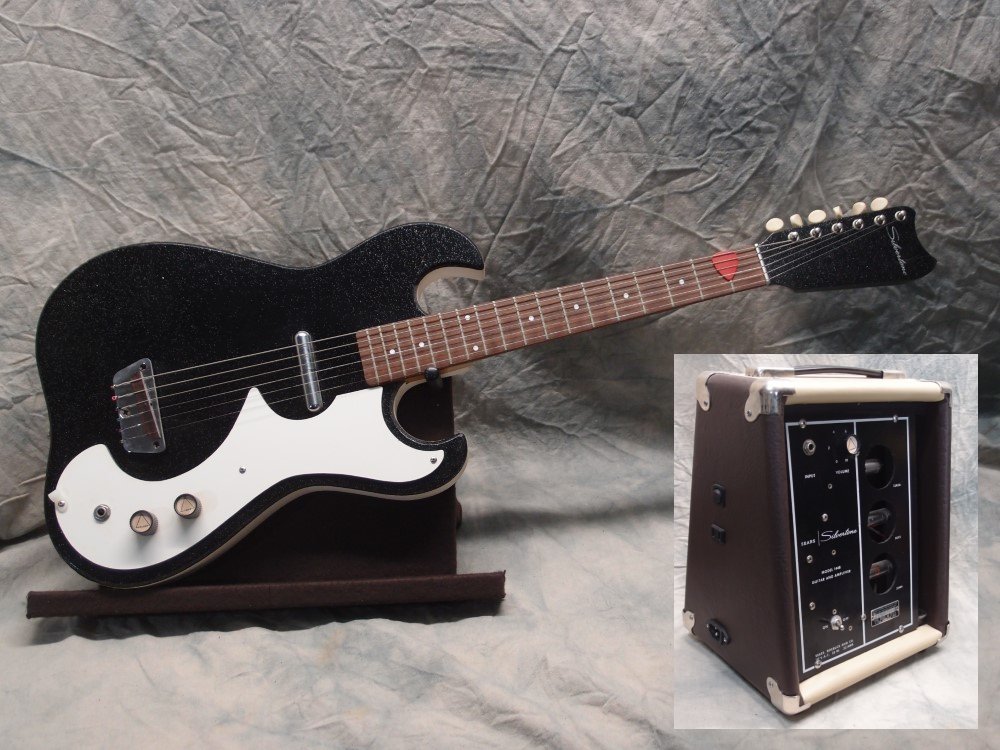

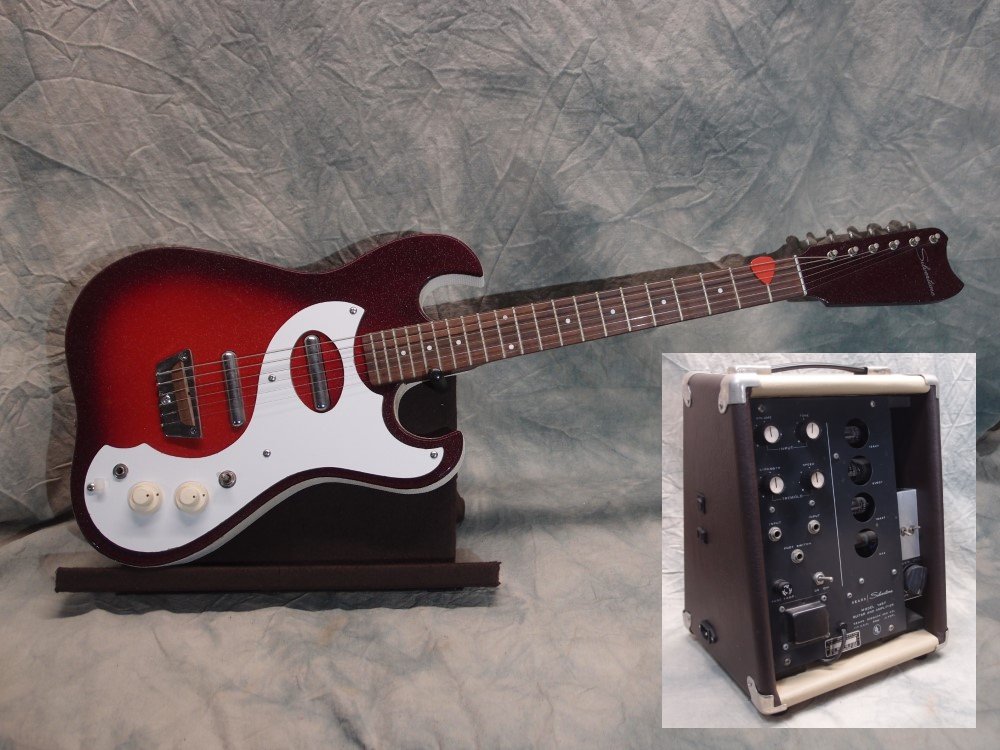

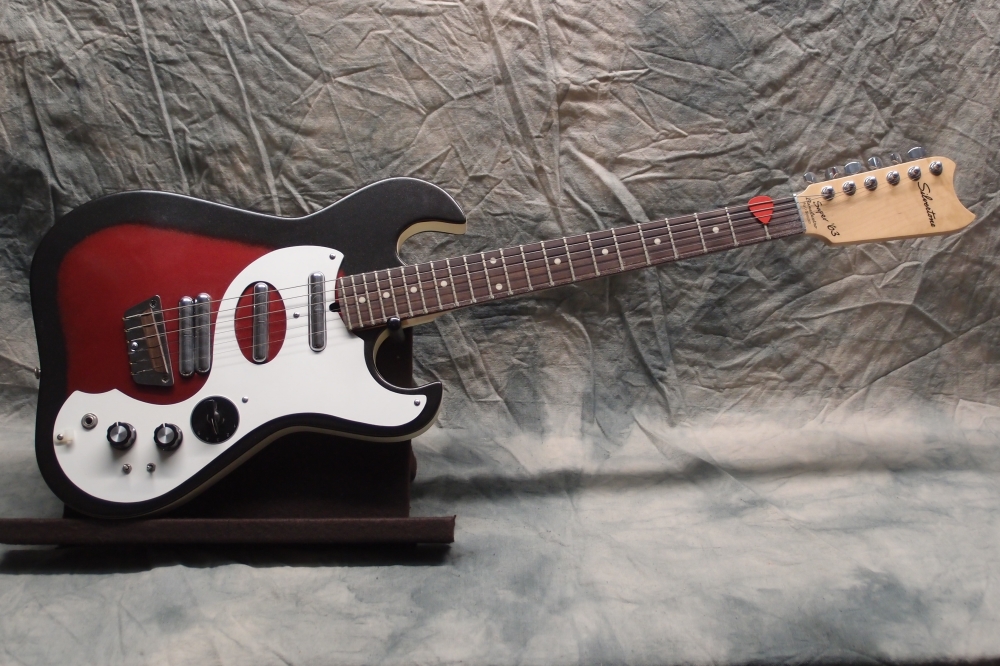
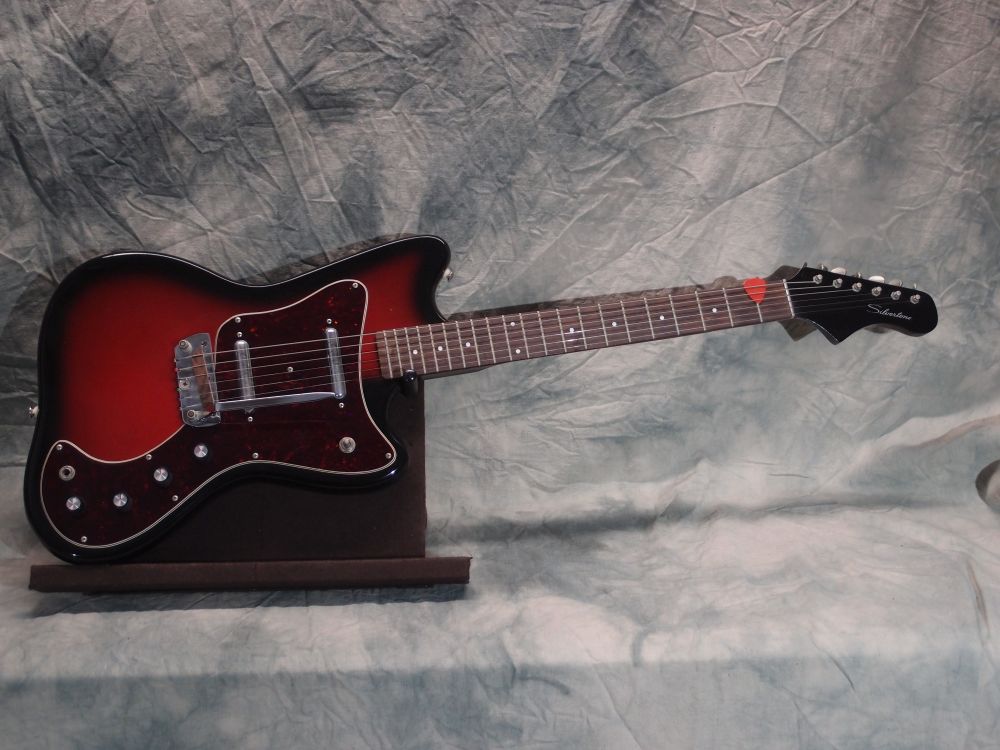




Questions or Inquiries?
Just want to say Hello? Sign the .